Yoga is not just an exercise routine; it is a transformative practice that connects the mind, body, and soul. Whether you’re looking to build physical strength, reduce stress, or find inner peace, yoga offers something for everyone. At Yoga With Barkha, we believe that yoga is a practice that welcomes all, regardless of age, experience, or fitness level.
If you’re new to yoga, this guide is designed to help you understand its essence, ease into the practice, and make yoga a part of your everyday life. Let’s embark on this enriching journey together!
Table of Contents
ToggleWhat is Yoga?
Originating in ancient India over 5,000 years ago, yoga is more than just physical postures. The term “yoga” means “union” – symbolizing the connection between mind, body, and soul. It combines movement (asanas), breathwork (pranayama), and mindfulness to nurture holistic well-being.
As a beginner, yoga is your opportunity to build flexibility, strength, and mental clarity while creating a deeper connection with yourself. You don’t need to be super flexible or fit to begin; yoga is for progress, not perfection.
Why Start Practicing Yoga?
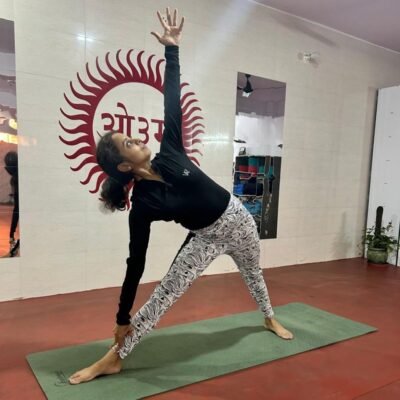
The benefits of yoga extend far beyond physical fitness, offering a holistic approach to well-being. On a physical level, yoga improves flexibility, builds muscle strength, and enhances balance and posture. It can also alleviate chronic pain, boost energy levels, and improve overall mobility, making it a versatile practice for people of all ages.
Beyond the physical, yoga is a powerful tool for stress relief and emotional balance. Through mindful breathing and relaxation techniques, it helps lower stress and anxiety, providing practical tools to manage emotions and instill a sense of calm in daily life. Regular practice also sharpens mental clarity, improving focus and concentration by encouraging mindfulness and presence in the moment.
Additionally, yoga supports better sleep quality by relaxing the body and calming the mind, making it easier to fall and stay asleep. Perhaps most importantly, yoga fosters inner awareness and self-discovery. It offers a path to tune into your thoughts and emotions, cultivating a deeper connection with yourself and encouraging personal growth on a profound level. Whether for physical health, mental clarity, or spiritual enrichment, yoga is a transformative practice that enriches all aspects of life.
Debunking Common Myths About Yoga
As a beginner, you may have certain misconceptions about yoga. Let’s address a few of them:
1. “I’m Not Flexible Enough for Yoga”
Flexibility is not a requirement to start yoga – it’s a benefit you gain over time. Yoga is about improving gradually, not achieving instant results.
2. “Yoga is Only for the Young and Fit”
Yoga is for everyone, irrespective of age, fitness level, or body type. It’s adaptable and can be tailored to suit individual needs.
3. “I Need Expensive Gear to Start”
All you need is a yoga mat and comfortable clothes. Yoga is about simplicity, not luxury.
4. “Yoga is Just Stretching”
While yoga involves stretching, it also builds strength, improves balance, enhances mental clarity, and fosters mindfulness.
How to Get Started with Yoga?
For beginners, starting yoga may feel overwhelming, but the process can be simple and enjoyable with the right approach.
1. Create a Comfortable Space
Find a quiet, clutter-free space where you can focus without distractions. A yoga mat, good ventilation, and a calm atmosphere are all you need.
2. Wear Comfortable Clothes
Choose breathable and stretchable clothing that allows you to move freely. Avoid restrictive outfits that might limit your range of motion.
3. Start with the Basics
Begin with simple poses and short sessions. Yoga is a gradual process – there’s no need to rush or push your body too hard.
4. Focus on Your Breath
Breathing is central to yoga. Learn to synchronize your movements with your breath to create a sense of flow and mindfulness.
5. Seek Guidance from an Expert
A skilled instructor, like Barkha Gupta, ensures you’re practicing safely and effectively. Personalized guidance can help you progress confidently and avoid common mistakes.
6. Be Consistent
Set aside a few minutes daily for your practice. It’s better to practice consistently for 10 minutes than to practice sporadically for an hour.
7. Embrace Patience and Positivity
Yoga is not about perfection; it’s about the journey. Celebrate your progress, no matter how small, and approach each session with an open and positive mindset.
Discover 24 Essential Yoga Poses for Beginners with Yoga With Barkha!
Are you ready to transform your body and mind? Whether you’re new to yoga or looking to refine your practice, Yoga With Barkha offers the perfect place to start. These 24 essential yoga poses for beginners will help you build a strong foundation, increase flexibility, and bring balance to your life. With expert guidance and a supportive community, Yoga With Barkha ensures that every step of your yoga journey is empowering, enriching, and tailored to your personal growth. It’s time to step onto the mat and begin your transformation!
1. Mountain Pose (Tadasana)
Mountain Pose is the foundation of all standing poses and offers an opportunity to check in with your body. To begin, stand tall with your feet together or slightly apart, and ground yourself by pressing into the floor with the four corners of your feet. Imagine a line of energy running from your feet up through your body, lengthening your spine and lifting the crown of your head toward the sky. Keep your shoulders relaxed and your palms facing forward or at your sides. This pose may seem simple, but it’s essential for improving posture, body awareness, and grounding your energy. It’s also a perfect starting point to center your mind before transitioning into other poses.
Benefits:
- Enhances your body awareness, improves posture, and helps build stability in your foundation.
- Encourages deep breathing and helps to ground your energy.
2. Tree Pose (Vrikshasana)
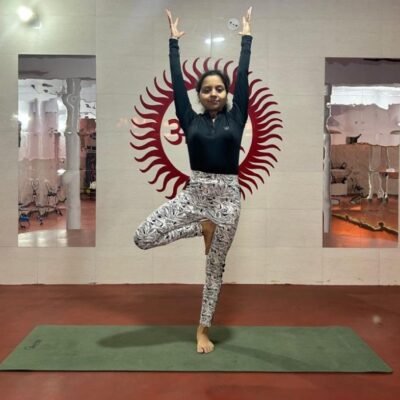
Tree Pose is a balancing posture that strengthens the legs while promoting focus and stability. To begin, shift your weight onto your left foot, grounding it into the floor. Bend your right knee and bring your right foot to rest on your left inner thigh or calf—avoid placing it directly on your knee. Bring your hands together in a prayer position in front of your chest or extend your arms overhead like branches reaching toward the sky. Engage your core and find a focal point to steady your gaze, helping you maintain balance. As you breathe deeply, feel the strength and flexibility of your body building with each breath. Tree Pose is a great way to enhance your balance and focus both physically and mentally.
Benefits:
- Improves balance and concentration, strengthens the legs, and encourages mental clarity.
- Opens the hips and stretches the groin, promoting flexibility.
3. Warrior I (Virabhadrasana I)
Warrior I is a powerful pose that stretches the legs while opening the chest and strengthening the arms. To begin, step your right foot forward, ensuring your knee is stacked directly over your ankle, and bend the knee to a 90-degree angle. Turn your left foot outward at a slight angle, pressing firmly into the ground. As you square your hips toward the front, raise your arms overhead, keeping your palms facing inward or together. Engage your core and lengthen your spine, and focus on your breath as you hold the pose. Warrior I builds stamina and strength while opening the chest and shoulders, helping improve overall endurance and flexibility.
Benefits:
- Strengthens the legs, hips, and core while enhancing balance and flexibility.
- Opens the chest and shoulders, improving posture and respiratory function.
- Opens the chest and shoulders, improving posture and respiratory function.
4. Warrior II (Virabhadrasana II)
Warrior II is a dynamic pose that boosts energy and endurance. Start by stepping into a wide stance with your feet parallel to the mat. Turn your right foot out 90 degrees and your left foot in slightly, aligning your heels. Bend your right knee over your ankle, ensuring the knee is not extending beyond the toes. Stretch your arms out to the sides at shoulder height, palms facing down. Keep your torso upright, relax your shoulders, and look over your right hand. As you hold the pose, focus on lengthening through your spine and engaging your core. Warrior II strengthens the lower body, enhances endurance, and improves flexibility in the hips, legs, and arms.
Benefits:
- Boosts stamina, strengthens the legs, hips, and arms, and increases circulation throughout the body.
- Promotes mental focus and grounding, helping to improve concentration.
5. Triangle Pose (Trikonasana)

Triangle Pose is a great way to stretch and align the spine while also engaging the core. Begin by stepping your feet wide apart, with your feet in a parallel position. Turn your right foot out 90 degrees and your left foot in slightly. Extend your arms parallel to the floor, and as you exhale, hinge from your hips, reaching your right arm toward your right foot. Place your right hand on your shin, ankle, or a yoga block for support. Reach your left arm up toward the ceiling, keeping both arms in one long line. Turn your head to gaze at your left hand or straight ahead. Triangle Pose helps to stretch the spine, hamstrings, and inner thighs, promoting flexibility and balance.
Benefits:
- Helps to align the spine, stretches the hips and legs, and strengthens the core.
- Improves body awareness, stability, and flexibility, making it a great addition to your practice.
6. Easy Pose (Sukhasana)
Easy Pose is a gentle seated pose often used for meditation and relaxation. To begin, sit on the floor with your legs crossed comfortably. Keep your spine straight and your shoulders relaxed. Rest your hands on your knees, palms facing up or down. Focus on your breath and bring your awareness inward. Sukhasana promotes relaxation and allows you to center your mind before beginning a meditation practice. It’s a simple yet effective way to calm the body and mind.
Benefits:
- Helps calm the mind and body.
- Opens the hips and promotes good posture.
7. Staff Pose (Dandasana)
Staff Pose is a foundational seated pose that helps strengthen the core and back. To begin, sit with your legs extended straight in front of you, keeping your feet flexed and your toes pointing upward. Place your hands on the floor beside your hips, with your fingers spread wide. Sit up tall, keeping your spine straight and shoulders relaxed. Engage your abdominal muscles to maintain stability, and focus on lengthening through your torso. This pose encourages proper alignment, helping build core strength and back flexibility.
Benefits:
- Strengthens the core, back, and legs.
- Improves posture and promotes spinal alignment.
8. Seated Forward Bend (Paschimottanasana)
Seated Forward Bend is a deeply relaxing pose that stretches the hamstrings and spine. To begin, sit with your legs extended straight in front of you, feet flexed. Inhale and lengthen your spine, reaching your arms overhead. On an exhale, hinge at your hips and slowly reach for your feet or ankles. Keep your back straight, avoiding rounding your spine. Relax your neck and head as you deepen the stretch. This pose helps calm the mind and is often used for stress relief and relaxation.
Benefits:
- Stretches the hamstrings, spine, and lower back.
- Calms the mind and reduces stress.
9. Butterfly Pose (Baddha Konasana)
Butterfly Pose is a gentle seated stretch that opens the hips and promotes relaxation. To begin, sit with your spine straight and bring the soles of your feet together. Let your knees fall outward, creating a diamond shape with your legs. Hold your feet with your hands and, if comfortable, gently press your knees toward the floor. Keep your spine long and your chest open. This pose helps relieve tension in the hips and groin, encouraging flexibility and a sense of calm.
Benefits:
- Opens the hips and groin.
- Relieves tension and encourages relaxation.
10. Chair Pose (Utkatasana)
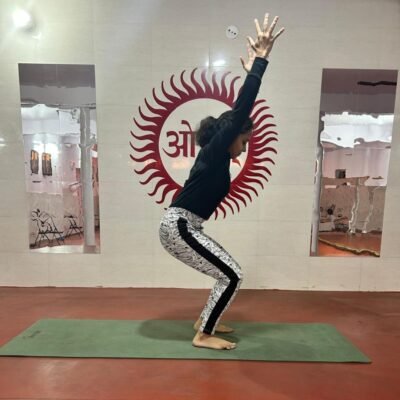
Chair Pose is a powerful standing pose that helps build endurance and body control. To start, stand with your feet hip-width apart, and as you inhale, raise your arms overhead, palms facing each other. As you exhale, bend your knees and lower your hips as if sitting in a chair, keeping your knees behind your toes. Engage your core and keep your weight in your heels. Hold the pose for several breaths to strengthen your legs, core, and lower back.
Benefits:
- Strengthens the legs, core, and arms.
- Builds stamina and body awareness.
11. Dancer’s Pose (Natarajasana)
Dancer’s Pose is an elegant balancing pose that requires strength, flexibility, and grace. Begin by standing tall and shifting your weight onto your left leg. Bend your right knee and bring your foot towards your glutes, holding your right ankle with your right hand. Extend your left arm forward, reaching out for balance. Slowly hinge forward at the hips while lifting your right leg behind you, creating a bow shape with your body. Keep your chest open and your gaze steady to maintain balance.
Benefits:
- Enhances balance and flexibility.
- Strengthens the legs, core, and back.
- Promotes grace and mental focus.
12. Plank Pose (Kumbhakasana)
Plank Pose is an excellent way to tone your abs, arms, and shoulders while building overall strength and stability. To begin, start in a push-up position with your hands directly under your shoulders. Keep your body in a straight line from head to heels, engaging your core, glutes, and thighs. Press the floor away with your hands, ensuring that your neck is in line with your spine and your gaze is slightly forward. Hold the pose for as long as you can, breathing steadily.
Benefits:
- Strengthens the core, arms, and shoulders.
- Improves body alignment and endurance.
13. Boat Pose (Navasana)
Boat Pose is a core-strengthening pose that engages the entire abdominal area, helping to build stability and balance. To start, sit on the floor with your knees bent and feet flat. Lean back slightly, lifting your feet off the ground so that your shins are parallel to the floor. Straighten your legs, forming a V-shape with your body. Extend your arms straight in front of you, parallel to the floor. Keep your chest open and your spine long, avoiding rounding your back. Hold the position while engaging your core and breathing deeply.
Benefits:
- Engages and strengthens the core.
- Enhances balance and stability.
14. Bridge Pose (Setu Bandhasana)
Bridge Pose is a gentle backbend that opens the chest, strengthens the back, and tones the glutes. To begin, lie on your back with your knees bent and feet flat on the floor, hip-width apart. Press your feet into the mat, and lift your hips toward the ceiling, keeping your shoulders and arms on the ground. Engage your glutes and legs, and press your chest toward your chin without lifting your neck. This pose improves spinal flexibility and strengthens the muscles along your back.
Benefits:
- Opens the chest and heart.
- Strengthens the back, glutes, and legs.
- Improves flexibility in the spine.
15. Cobra Pose (Bhujangasana)
Cobra Pose is a backbend that stretches the chest and spine while relieving tension. Begin by lying flat on your stomach with your legs extended and the tops of your feet pressed into the floor. Place your hands under your shoulders with your elbows close to your body. As you inhale, lift your chest off the ground by pressing into your palms, extending through your spine. Keep your elbows slightly bent and your gaze forward. Cobra Pose energizes the body and opens the chest.
Benefits:
- Energizes the body and relieves tension in the lower back.
- Stretches the chest, shoulders, and spine.
- Helps improve posture.
16. Seated Spinal Twist (Ardha Matsyendrasana)
Seated Spinal Twist is a deep rotational stretch that detoxifies the body and improves spine flexibility. Begin by sitting with your legs extended in front of you. Bend your right knee and cross it over your left leg, placing your right foot flat on the floor. Twist your torso to the right, placing your left elbow on the outside of your right knee. Reach your right hand behind you, either on the floor or on your lower back, to deepen the twist. Keep your spine long as you rotate.
Benefits:
- Improves flexibility in the spine.
- Detoxifies and massages internal organs.
- Increases mobility in the back and hips.
17. Supine Twist (Markatasana)
The Supine Twist is a restorative pose that helps release tension in the lower back and promotes relaxation. Begin by lying on your back with your knees bent and feet flat on the floor. Extend your arms out to the sides in a T-shape. As you exhale, lower both knees to one side, keeping your shoulders grounded. Turn your head in the opposite direction to increase the stretch. This pose is excellent for relieving lower back tension and promoting flexibility in the spine.
Benefits:
- Releases tension in the lower back.
- Improves spine flexibility.
- Relaxes the body and mind.
18. Child’s Pose (Balasana)
Child’s Pose is a restful and grounding pose that allows you to reconnect with your breath. To begin, kneel on the floor with your big toes touching and knees wide apart. Sit back onto your heels and then fold your torso forward, resting your forehead on the mat. Extend your arms forward or place them alongside your body. Breathe deeply, feeling your body relax and your mind settle. Child’s Pose is a great way to rest and gently stretch your back, hips, and arms.
Benefits:
- Restores and relaxes the body.
- Gently stretches the back, hips, and arms.
- Promotes deep breathing and mindfulness.
19. Corpse Pose (Savasana)
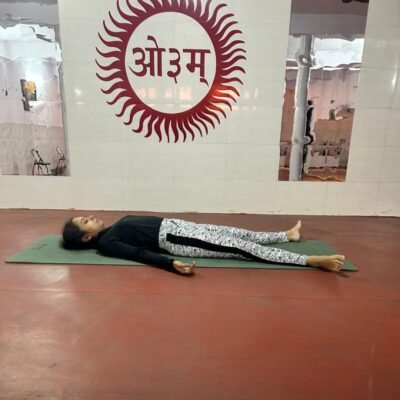
Corpse Pose is typically practiced at the end of a yoga session for deep relaxation. To begin, lie flat on your back with your legs extended and arms resting at your sides, palms facing upward. Close your eyes and focus on your breath, allowing your body to fully relax into the floor. Release any tension, and let go of thoughts as you focus solely on your breath and the present moment. Savasana helps to integrate the benefits of your practice and provides a sense of calm and balance.
Benefits:
- Promotes deep relaxation and stress relief.
- Integrates the benefits of the entire practice.
- Calms the nervous system and reduces tension.
20. Cat-Cow Pose
Cat-Cow Pose is a gentle flow between two poses that helps loosen the spine and improve mobility. Begin on your hands and knees, aligning your wrists under your shoulders and knees under your hips. Inhale as you arch your back, dropping your belly towards the floor (Cow Pose). Exhale as you round your back, tucking your chin and tailbone (Cat Pose). Continue moving with your breath, flowing between these two positions to increase flexibility and mobility in your spine.
Benefits:
- Increases spinal flexibility.
- Improves mobility and relieves tension in the back.
21. Downward-Facing Dog (Adho Mukha Svanasana)
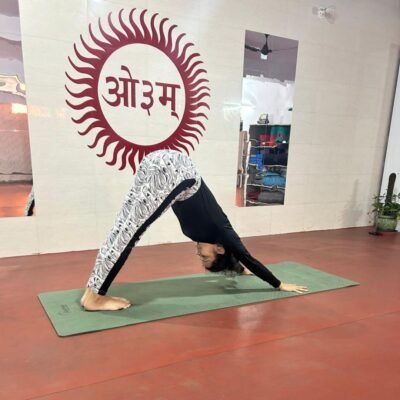
Downward-Facing Dog is a foundational pose that strengthens the arms and stretches the legs. Start in a tabletop position with your hands shoulder-width apart and knees hip-width apart. Press your hands into the floor as you lift your hips toward the ceiling, forming an inverted V-shape. Keep your feet hip-width apart, and press your heels toward the floor. This pose stretches the hamstrings, calves, and spine while building strength in the shoulders and arms.
Benefits:
- Strengthens the arms, shoulders, and core.
- Stretches the hamstrings, calves, and spine.
22. Upward-Facing Dog
Upward-Facing Dog is a backbend that opens the chest and strengthens the back. Begin by lying on your stomach with your legs extended and tops of your feet pressed into the floor. Place your hands on the mat under your shoulders, elbows bent. As you inhale, press into your palms and lift your chest, legs, and thighs off the floor. Extend through the spine and open your chest, keeping your elbows slightly bent. This pose improves spinal extension and strengthens the back and arms.
Benefits:
- Opens the chest and lungs.
- Strengthens the back, arms, and core.
23. Low Lunge (Anjaneyasana)
Low Lunge is a deep hip and thigh stretch that also builds strength and stability. Begin in a standing position and step one foot forward, bending the knee to form a 90-degree angle. Lower the back knee to the floor, keeping the back leg extended. Lift your torso and reach your arms overhead, with palms facing each other. Sink your hips toward the floor to deepen the stretch in the hips and thighs. This pose opens the hips while strengthening the legs.
Benefits:
- Stretches the hips, thighs, and groin.
- Builds strength in the legs and core.
24. Half Split Pose
Half Split Pose is a hamstring stretch that improves flexibility. Start in a low lunge position with one foot forward and the back leg extended straight behind you. As you exhale, shift your hips back and straighten the front leg, keeping the toes pointed upward. Reach forward toward your extended leg, aiming to bring your chest toward your thigh. This pose targets the hamstrings, helping to increase flexibility and release tension in the legs.
Benefits:
- Increases flexibility in the hamstrings.
- Improves mobility in the hips and legs.
Incorporating Yoga Into Your Life
Yoga is not just a practice; it’s a way of life. Here are simple ways to bring yoga into your daily routine:
- Morning Practice: Begin your day with a few gentle stretches or a short meditation to set a positive tone.
- Mindful Breathing: Use deep breathing exercises during stressful moments.
- Healthy Living: Adopt a balanced diet and mindful habits that align with yoga’s principles of harmony.
- Gratitude and Reflection: End your day with a moment of gratitude or a calming pose like Savasana.
Overcoming Challenges as a Beginner
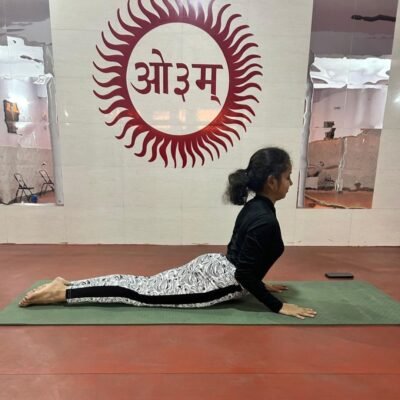
Starting anything new can be challenging. Here’s how to navigate common obstacles:
- Lack of Motivation: Set small, achievable goals and remind yourself of the benefits yoga offers.
- Time Constraints: Even 10 minutes a day can make a difference. Consistency matters more than duration.
- Difficulty with Poses: Use props or modify poses to make them more accessible. Progress takes time.
- Feeling Self-Conscious: Yoga is a personal journey – focus on your own growth, not comparisons.
Your Journey Begins with Yoga With Barkha
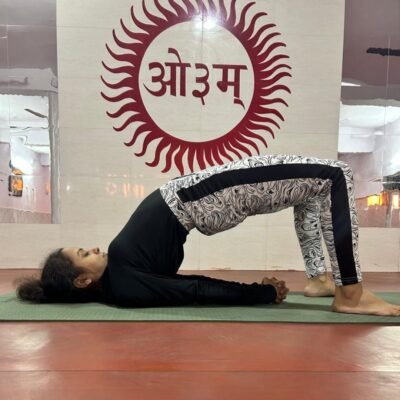
Embarking on a yoga journey is one of the best decisions you can make for your physical, mental, and emotional well-being. At Yoga With Barkha, we’re here to guide you every step of the way, helping you embrace yoga’s transformative power at your own pace.
Ready to roll out your mat and start your journey? Visit Yoga With Barkha to explore our beginner-friendly classes and resources. Let’s take this first step together toward a healthier, more balanced you.
FAQ’s
1. Do I need to be flexible to start yoga?
No, flexibility is not a prerequisite for yoga. Yoga is about progress, not perfection. As you practice regularly, your flexibility will naturally improve over time. It’s more important to focus on your breath and alignment than on how far you can stretch.
2. How often should a beginner practice yoga?
It’s ideal to start with 2-3 sessions per week, even if they’re short. Consistency is key. As you grow more comfortable, you can gradually increase the frequency and duration of your practice.
3. What equipment do I need to begin yoga?
All you need is a yoga mat and comfortable clothing to get started. While props like blocks, straps, or cushions can enhance your practice, they’re optional and can be added as you progress.
4. Can I practice yoga if I have a medical condition or injury?
Yes, but it’s essential to consult with your doctor before starting. Inform your yoga instructor about any medical conditions or injuries so they can suggest modifications or poses that suit your needs. Yoga is highly adaptable and can often be tailored to accommodate various health concerns.
5. Is yoga a good workout for weight loss?
Yoga can be a great complement to weight loss efforts, especially dynamic styles like Vinyasa or Power Yoga, which increase calorie burn. But on top of it, being healthy is what should be your main goal. Additionally, yoga reduces stress, improves mindfulness, and encourages healthier habits, all of which support weight management.
Conclusion
Yoga is a lifelong practice that brings benefits beyond the mat. With these 24 essential poses, you are setting the stage for a fulfilling yoga journey. At Yoga With Barkha, we are here to support you, whether you’re just starting out or looking to refine your practice. Together, we will help you develop physical strength, mental clarity, and emotional well-being, creating balance in every aspect of your life. Start your practice today and experience the transformative power of yoga.
Why is Yoga With Barkha is the Best Yoga Studio in Noida?
Yoga With Barkha offers a holistic approach to yoga where beginners can feel supported and guided at every step. Our expert instructors offer personalized instruction, ensuring that you progress at your own pace with safety and alignment at the forefront. Our welcoming and inclusive community fosters a space where you can thrive, strengthening both your body and mind while cultivating mindfulness.
Share this

About Us
Quick Links
Contact Info
- B-69, Arya Samaj Mandir, Sector - 33, Noida, Uttar Pradesh 201301
- +91-8800094560
- yogawithbarkha.27@gmail.com
